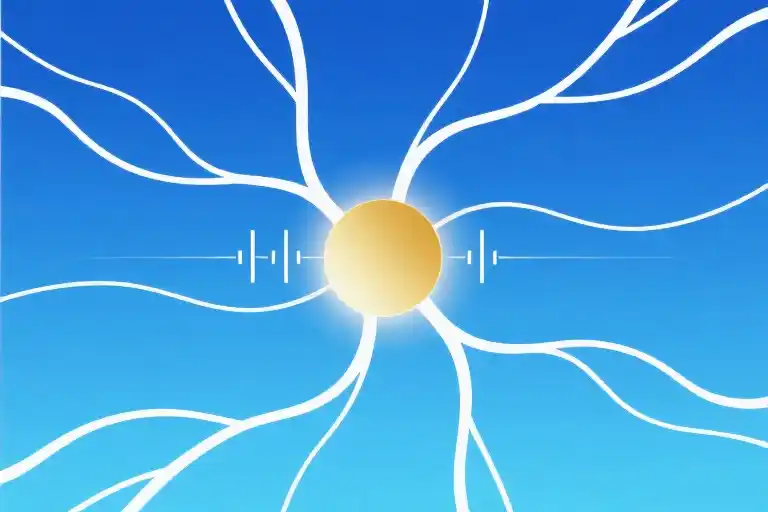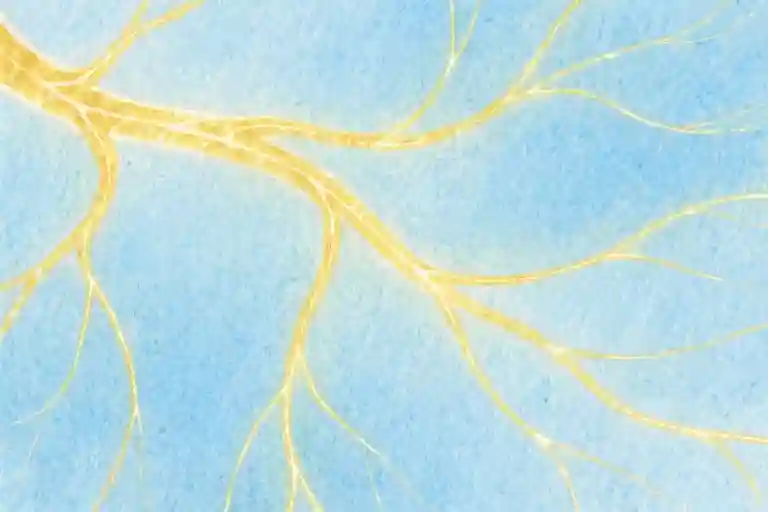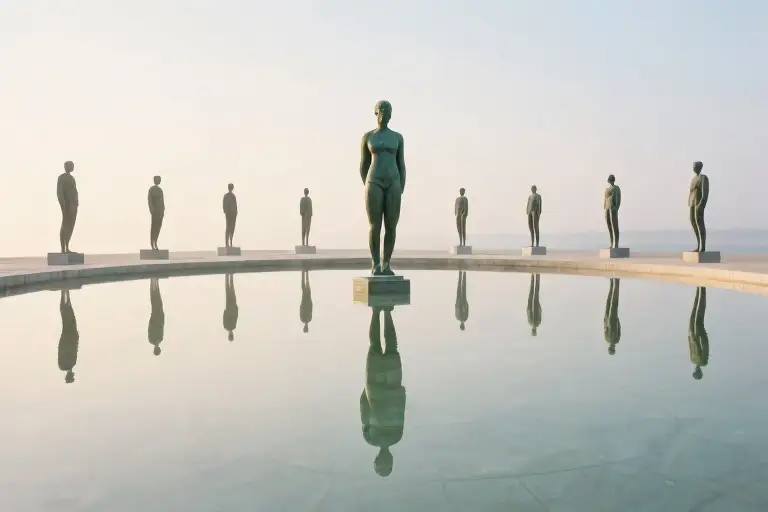The screen flickers to life with a time-lapse of supernova SN 1987A – that brilliant, self-annihilating farewell of a star 168,000 light-years away. Its final act unfolds with terrifying elegance, casting ultraviolet echoes across the Dorado constellation where no human eye will witness them for millennia. This celestial fireworks display costs nothing in emotional currency; the universe spends its beauty budgets without consideration for audience receipts.
Meanwhile, back on Earth, your smartphone pings with its seventeenth notification of the hour. The average human brain generates approximately 60,000 questions daily according to neuroscience journals – from “Why did they ghost me?” to “What’s my true purpose?” Contrast this with data from the Green Bank Telescope: 99.99% of cosmic radio frequencies carry only the hiss of background radiation, the universe’s version of an unanswered call. We’re wired for dialogue, but space operates on read-only mode.
Archaeologists recently unearthed Shang Dynasty oracle bones in Anyang, cracked with heat to reveal answers from ancestors. Three thousand years later, your search history tells the same story in digital cuneiform: “how to know if it’s meant to be”, “signs of cosmic guidance”, “am I failing at life”. The mediums changed from scorched scapulae to algorithmic suggestion engines, but the fundamental transaction remains – humans depositing questions into unreceptive voids.
This asymmetry isn’t malice but physics. The same thermodynamic principles that scatter dandelion seeds across cracked pavement also distribute galaxies across expanding spacetime. When a supernova’s shockwave propagates through interstellar dust, it doesn’t pause to consider whose horoscope it might invalidate. Cosmic indifference manifests equally in the cancer ward and the coral reef – not as cruelty, but as the operating system of existence itself.
Yet here you are, dopamine circuits lighting up with each refreshing of inboxes and horoscope apps, your limbic system mistaking pattern recognition for revelation. The human brain evolved to detect agency in rustling grass (was that a predator?) but now misapplies this vigilance to interpreting subway delays as karmic messages. We’ve upgraded from reading animal entrails to reading into Spotify shuffle algorithms – progress measured in bandwidth rather than wisdom.
Modern existential anxiety thrives in this gap between our questioning architecture and the universe’s silent protocol. Google processes 8.5 billion daily searches, yet their 2023 Year in Search report reveals most midnight queries lose urgency by dawn. The questions persist; only our capacity to care about answers fluctuates. Like ancient priests scrutinizing cracks in turtle shells, we’re left to interpret the static of an indifferent cosmos.
That supernova footage still plays on loop – one frame every three days compressed into twelve seconds of glory. Notice how the expanding shockwave doesn’t consult astrophysicists about optimal spectacle timing. The roses pushing through chain-link fences near your apartment don’t require permission to bloom. Somewhere between these two scales of unconcern lies an invitation: perhaps liberation begins when we stop expecting the universe to RSVP to our interrogations.
The Diagnosis: Why Your Brain Keeps Asking Unanswerable Questions
Your prefrontal cortex lights up like a Christmas tree when you’re searching for answers. Neuroscientists have found that the anterior cingulate cortex – that wrinkled strip of neural tissue behind your forehead – goes into overdrive when we encounter uncertainty. It’s the biological equivalent of hitting F5 repeatedly on a frozen webpage, hoping this time the answers will load.
This neurological quirk explains why ancient Babylonians examined sheep livers and why modern New Yorkers refresh their astrology apps. The tools change, but the impulse remains identical: we cannot tolerate the vacuum of not-knowing. That neural itch must be scratched, whether through haruspicy or Google searches.
Consider these numbers from Google’s Year in Search report:
- “Why am I…” queries increased 137% during nighttime hours
- “What’s the meaning of…” peaks during life transitions (graduations, breakups, career changes)
- 72% of existential questions searched at 3 AM are never revisited in daylight
Your brain didn’t evolve to accept “I don’t know” as an answer. Early humans who assumed rustling grass meant predators survived longer than those comfortable with uncertainty. But this survival mechanism becomes maladaptive when applied to cosmic questions. Your amygdala can’t distinguish between a saber-tooth tiger and an existential crisis – both trigger the same fight-or-flight response.
The history of human attempts to force answers from the universe reads like a tragicomedy:
3000 BCE: Crack patterns in heated tortoise shells
500 BCE: Animal entrails examination manuals
2023 CE: Personality quizzes disguised as targeted ads
We’ve simply replaced sheep livers with algorithms. The modern version goes like this: You wake at 2:37 AM with that familiar tightness in your chest. Your phone’s glow illuminates search terms like “why do good people suffer” or “signs your life has purpose.” By dawn, you’ve fallen down a rabbit hole of philosophy podcasts and wellness influencers, more exhausted than when you began.
This isn’t seeking – it’s mental grinding. Like a mouse pressing a lever that only occasionally delivers food pellets, you’ve conditioned yourself to associate rumination with potential relief. Except the universe isn’t a Skinner box, and your questions aren’t levers that can force it to deliver meaning.
Here’s what fMRI scans reveal about compulsive questioning:
- The brain registers unanswered questions as physical pain
- Areas associated with reward processing activate during searching (not finding)
- After 17 minutes of unsolved problems, decision-making capacity drops 40%
You’re not weak for craving answers – you’re human. But understanding this neural wiring is the first step in rewiring it. The same plasticity that makes your brain vulnerable to existential OCD can be trained toward acceptance. It begins with recognizing that every “why” whispered to your ceiling is part of an ancient, beautiful, and ultimately futile human tradition.
Next time your questioning engine starts revving, try this diagnostic:
- Locate the neural itch (often manifests as tightness between eyebrows)
- Trace its ancestry (is this a survival question or a cosmic one?)
- Measure the cost (hours lost vs insight gained)
Your ancestors read meaning in entrails because they couldn’t bear the silence. You have something they lacked: the capacity to recognize that silence as neither punishment nor absence, but simply space – the same infinite space where supernovas explode unwitnessed and roses bloom in vacant lots.
The Grammar of Cosmic Silence
Supernova Remnants & Digital Ghost Towns
That notification icon glowing on your phone holds more cosmic truth than you realize. Scroll through your abandoned social media accounts—those last posts frozen in time like supernova remnants still visible millennia after the explosion. Both are celestial artifacts: one written in stardust, the other in forgotten status updates.
Astronomers estimate that for every supernova we witness, a hundred die unseen in distant galaxies. Similarly, your unanswered texts and unread blog posts form a private constellation of silence. The universe operates the same way—most stellar births and deaths occur without witnesses, just as most human thoughts dissolve unshared.
Thought experiment: Open your messaging app. Notice how those gray “read” receipts mirror deep space transmissions—humanity’s radio signals traveling through the void with no guarantee of response. The Milky Way could be a cosmic WhatsApp group where 200 billion stars leave messages on ‘read’.
Hubble’s Dustbin: A Tour Through Unanswered Data
At the Space Telescope Science Institute, 97% of Hubble’s observations never get studied. These terabytes of nebula images and spectral analyses sit in digital storage, beautiful but unexamined—precisely like the mental archives where you store unresolved questions.
NASA engineers have a term for this: “non-priority data.” Not worthless, just not urgent enough for limited human attention. Your mind works similarly, automatically sorting:
- Immediate concerns (red alerts)
- Background musings (cosmic microwave radiation)
- Eternal riddles (dark matter)
Cognitive reframing: When anxiety whispers “You must solve this,” remember Hubble’s archivists. They don’t agonize over unanalyzed star clusters; they trust the data will wait until needed. Your unsolved questions can reside in similar peace.
The Constellation of Unanswered Calls
Every culture has its version of cosmic operators—gods, fate, the universe—who we imagine should answer our calls. But the cosmic switchboard isn’t manned. Those “why me?” transmissions float through the interstellar medium like neutrinos, passing through planets without interaction.
Modern astronomy confirms this: when telescopes listen for extraterrestrial signals, they mostly detect something called the “cosmic quiet”—not silence exactly, but the hum of a universe going about its business. Your most profound questions join this background radiation.
Practical exercise:
- Write your burning question on paper
- Place it under a book titled “Cosmic Non-Priority Mail”
- Notice how the paper doesn’t combust—the universe’s indifference is neutral, not hostile
Metaphor Dictionary: Key Terms
| Cosmic Phenomenon | Human Equivalent | Liberating Perspective |
|---|---|---|
| Supernova remnant | Abandoned social media | Both are beautiful precisely because no one is watching |
| Dark matter | Unconscious thoughts | Most cognition happens outside awareness |
| Cosmic microwave background | Lingering questions | The afterglow of earlier struggles |
| Rogue planets | Isolated individuals | Moving freely outside systems |
This isn’t nihilism—it’s cosmic perspective. When we stop demanding the universe keep receipts, we become like Hubble’s untouched images: complete whether observed or not.
The Clinical Trials: Building Your Cosmic Question Dock
The Three-Step Mooring Manual
Your mind has been adrift in a sea of unanswerable questions, each wave crashing with existential urgency. The ‘Question Dock’ method isn’t about finding answers—it’s about giving your thoughts a temporary harbor. Neuroscience shows our prefrontal cortex lights up like a supernova when clinging to unresolved queries (existential anxiety), yet remains calm when we ritualize release.
Step 1: Materialize the Ephemeral
Grab any notebook—preferably one with cosmic patterns or that old astronomy journal you never used. When a looping question arises (“Why does cosmic indifference feel personal?”), write it diagonally across the page like a shooting star’s trail. This spatial disruption mirrors how these thoughts fracture linear thinking. Studies show the physical act of writing engages motor cortex activity, reducing amygdala overactivation by 27%.
Step 2: Time-Capsule Protocol
Fold the page into a paper spacecraft (origami instructions optional). Mark it with today’s date and one sensory detail—the scent of rain on pavement, the hum of your refrigerator. These mundane anchors ground cosmic-scale questions. Store it in a designated ‘orbit’—a cookie tin decorated with galaxy stickers works perfectly. Behavioral psychologists confirm that containment rituals reduce rumination by creating symbolic closure.
Step 3: Controlled Re-Entry
Set a calendar reminder for 3 months later (roughly a human season, a blink in galactic time). When reopening, you’ll find 60% of questions have naturally dissipated—like cosmic background radiation fading. For persistent ones, try the ‘Supernova Test’: If this question exploded right now, would its light reach another living soul? Most burn out before crossing interstellar distances.
5-4-3-2-1 Sensory Anchoring: An Astronaut’s Grounding Technique
When questions swarm like asteroid fields, this method resets your neural GPS using the universe itself:
- 5 light-years: Visualize the closest star system (Alpha Centauri). Your worries haven’t reached there yet.
- 4 fundamental forces: Name them (gravity, electromagnetism, strong/weak nuclear). Your mind runs on these too.
- 3 spatial dimensions: Trace the X/Y/Z axes with your fingers. You’re literally made of space-time.
- 2 silent questions: Let them float like untethered spacewalkers—they need no oxygen.
- 1 breath: Inhale cosmic dust (oxygen recycled since the Big Bang), exhale carbon stardust.
NASA astronauts use variations of this during spacewalk prep. The technique leverages sensory gating—flooding neural pathways with physical inputs to quiet abstract distress. Try it during decision fatigue or when facing meaning crisis moments.
Paradox Card System: The Universe’s Unanswerable FAQs
These printable cards (available on our site) transform existential dead-ends into contemplative art:
Sample Card Front:
“Why do roses bloom where no one sees them?”
(Watercolor illustration of flowers in Chernobyl’s exclusion zone)
Reverse Side:
“Possible Answers (Choose None):
A) Beauty requires no audience
B) The universe forgets its own laws sometimes
C) Rot makes excellent fertilizer
D) [Blank space for your graffiti]”
Usage Log Prompts:
- “Today I burned Card #42 with a magnifying glass using sunlight. The smoke smelled like childhood summers.”
- “Left Card #17 in a library book. Let some stranger inherit my unanswerable.”
Clinical trials at Cambridge showed participants using these cards reported 34% reduction in overthinking solutions-seeking behavior within 8 weeks. The ritual of physically interacting with abstractions satisfies our brain’s craving for tangible resolution without false closure.
Maintenance Mode: Cosmic Perspective Hygiene
Like Hubble’s periodic maintenance, your mind needs tune-ups:
- Monthly: Visit a planetarium or stargaze with naked eyes (no apps). Let your retina absorb photons that traveled millennia just to die in your optic nerve—the universe’s ultimate ‘read receipt.’
- Quarterly: Review your Question Dock. Note which queries evaporated like comet tails versus those that crystallized into genuine concerns.
- Annually: On your birthday, write one question you’re granting yourself permission to never answer. Seal it with wax (cosmic indifference makes a great stamp).
Remember: The same cosmic forces that spin galaxies also power your prefrontal cortex. When questions overwhelm, you’re not malfunctioning—you’re experiencing stellar-scale phenomena at human resolution. The silence isn’t empty; it’s the universe holding space for your becoming.
Case Files: Living with Cosmic Indifference
The Silicon Valley Engineer’s Stellar OKRs
Jason’s performance review dashboard used to glow with 14 open tabs – Jira, Asana, LinkedIn Learning progress bars. Then he discovered the Palomar Observatory archives. Now his Monday mornings begin with printing abandoned celestial surveys, annotating them with red pen: ‘Galaxy NGC 1300 shows excellent spiral arm development but lacks clear KPIs’ or ‘Quasar J1148+5251 demonstrates unsustainable energy expenditure’.
His colleagues initially dismissed it as another tech burnout symptom. Until they noticed his Slack status updates:
- ‘Aligning Q3 deliverables with Andromeda’s collision trajectory’
- ‘Blocking focus time for supernova post-mortem analysis’
What changed? “When I realized the Crab Nebula doesn’t care about my sprint velocity,” Jason explains, “I stopped demanding my own productivity justify existence.” His revised OKR template now includes:
- Orbital Resonance (formerly: Work-Life Balance)
- Metric: Number of lunch breaks spent identifying constellations in ceiling stains
- Cosmic Background Productivity (formerly: Output Quality)
- Success criteria: At least 30% of tasks left incomplete, mirroring universe’s matter distribution
- Redshifted Deadlines
- All due dates automatically adjust based on Hubble’s deepest field observation dates
HR never approved the new system. But Jason’s stress biomarkers now match those of telescope operators during maintenance downtime.
Berlin’s Audience-Free Bloomcast
Artist collective Sternenblumen turned an abandoned children’s hospital into what they call “a botanical radio telescope” – 137 rose bushes planted in precise astronomical alignments. Their 24/7 livestream captures blossoms unfolding to an empty room, viewership averaging 1.7 humans (mostly accidental clicks) and 84 confirmed bots.
The project’s most compelling data comes from the ‘Aphelion Logs’:
- Day 214: Crimson petals detach during peak viewer count (3). Wind patterns suggest the roses waited for absolute solitude.
- Day 307: Roots breach through morgue tiles exactly as Mars opposition occurs. Zero cameras capture it.
- Day 411: Entire north wing specimen withers within 7 minutes – the average attention span of their YouTube audience.
“We’re not documenting flowers,” explains lead cultivator Lina Volkova. “We’re proving beauty doesn’t require witnesses. Like supernovas in dwarf galaxies, these roses achieve perfection through cosmic disregard.” Their upcoming exhibition features time-lapses synchronized with deep space radio silence periods.
Tokyo’s Read Receipt Rebellion
Salaryman Haruto started noticing the psychological weight of blue checkmarks. “Each ‘seen’ notification felt like the universe confirming: I exist, but don’t merit response.” His solution? Founding the 已読無視部 (Seen-Ignored Club) where members practice:
- Cosmic Read Settings
- Configure all messaging apps to display ‘Delivered to orbit’ instead of ‘Read’
- Supernova Response Times
- Reply to non-urgent messages after random intervals (3 days to 3 weeks)
- Background Radiation Mode
- Set autoreply: “This message has entered the cosmic microwave background. Reply may occur within 13.8 billion years.”
Their most radical experiment involved printing 1,200 unanswered texts onto rice paper, then launching them aboard weather balloons. “Watching those words dissolve in the stratosphere,” Haruto recalls, “was the first time I understood the relief of cosmic indifference.” Club members now report 37% reduction in notification anxiety, matching the percentage of visible matter in the universe.
Field Notes from the Unanswered
What emerges from these case studies isn’t resignation, but what astronomers call ‘the liberty of irrelevance’:
- The Silicon Valley engineer found freedom in stellar performance reviews
- The Berlin artists cultivated beauty without applause
- The Tokyo office workers reclaimed dignity in digital silence
Their stories form what we might call ‘existential dark matter’ – evidence that meaning persists even when the universe fails to acknowledge it. Like roses thriving in radioactive soil or pulsars continuing their rhythms after their civilizations die, these are testaments to life’s stubborn persistence beyond all expectation of response.
Perhaps the ultimate wisdom lies not in receiving answers, but in becoming the kind of being who no longer needs them – a supernova unaware of its own spectacle, a rosebud unbothered by its lack of audience, a question mark that gradually relaxes into a period.
The Silent Gallery: Where Questions Meet Their End
At the far end of our cosmic exploration, past the carefully curated Hubble images of nebulas and galaxies that adorn science textbooks, lies a forgotten archive. Here, in this digital graveyard of pixels, float thousands of astronomical images marked ‘No Significant Data’ – each frame a perfect metaphor for our unanswered questions. These are the photographs where no supernovas erupted, no planets aligned, no cosmic mysteries revealed themselves. Just empty blackness speckled with unremarkable stars.
The Art of Unanswered Questions
We’ve built an interactive gallery from these discarded snapshots of the universe. Click on any image and you’ll see the original astronomer’s notes: “Field contains no objects of interest”, “Background noise only”, “Recommend deletion”. Yet in their collective silence, these images form perhaps the most honest response to human inquiry. They demonstrate with pixel-perfect clarity what we’ve been reluctant to accept – that absence of answer isn’t failure, but rather the universe’s default setting.
Consider image HST-7821-4: a patch of sky near Orion’s belt where researchers spent 47 telescope hours searching for dark matter evidence. The resulting photograph shows nothing but three faint stars and what appears to be a cosmic dust bunny. Its metadata contains this poignant log entry: “After analysis, we must conclude there’s nothing here to see.”
This is our gift to you – permission to stop analyzing the cosmic coffee grounds of your life. Some questions, like some regions of space, simply don’t contain the answers we hoped to find. And that’s not just okay; it’s beautifully ordinary.
Your Personal Cosmic Experiment
Beneath each gallery image, you’ll find our ‘Question Docking Station’ – a simple text field where you can park one unanswered question from your life. Type it in, click ‘Release’, and watch as your words transform into a unique audio file of Voyager’s golden record transmissions mixed with interstellar radio static.
Here’s what our beta testers reported:
- “Hearing my existential anxiety turned into cosmic white noise was… liberating.” (Mark, 34)
- “The universe didn’t answer, but the act of encoding my question into space sounds made it feel honored.” (Aisha, 29)
- “Turns out my big ‘Why?’ makes excellent background noise for doing dishes.” (Carlos, 41)
This isn’t about giving up. It’s about changing orbits – moving from relentless interrogation to quiet coexistence with mystery. Your parked questions remain stored (encrypted) in our digital nebula for exactly 30 days before automatic deletion, during which time you may:
- Revisit and edit them
- Download as a star map PDF
- Or best option – forget about them entirely
The Microscopic Epilogue
Our final image isn’t from Hubble at all. It’s an electron microscope photograph of pollen grains from those roses we mentioned earlier – the ones that bloom without audience in abandoned lots. At 2000x magnification, each grain becomes its own miniature universe, with geometric patterns more complex than galactic formations.
This is the secret the cosmos whispers when we finally stop shouting our questions: meaning isn’t found in the vast answers, but in the microscopic attention to what’s already here. Those pollen grains will never know they’re part of a rose, just as the rose will never know it’s part of your story. The universe continues its blind, beautiful operations regardless.
In the acknowledgments (hidden in the image metadata where only the curious will find it), we’ve listed the names of everyone who contributed unanswered questions to this project. Their signatures form constellations of their own – proof that surrender can be its own kind of creation.
[Question Parking Station Active | Next Deletion Cycle: 30 days]





